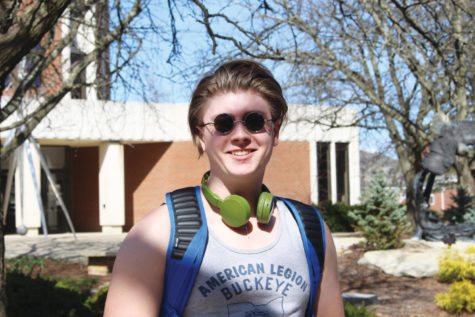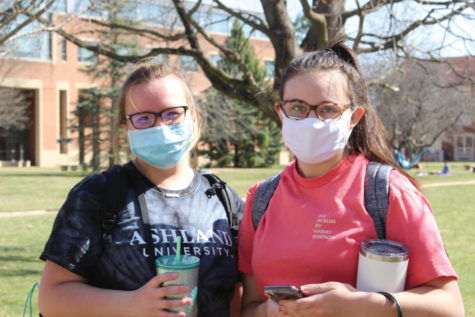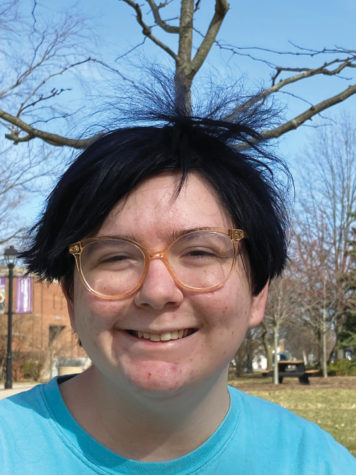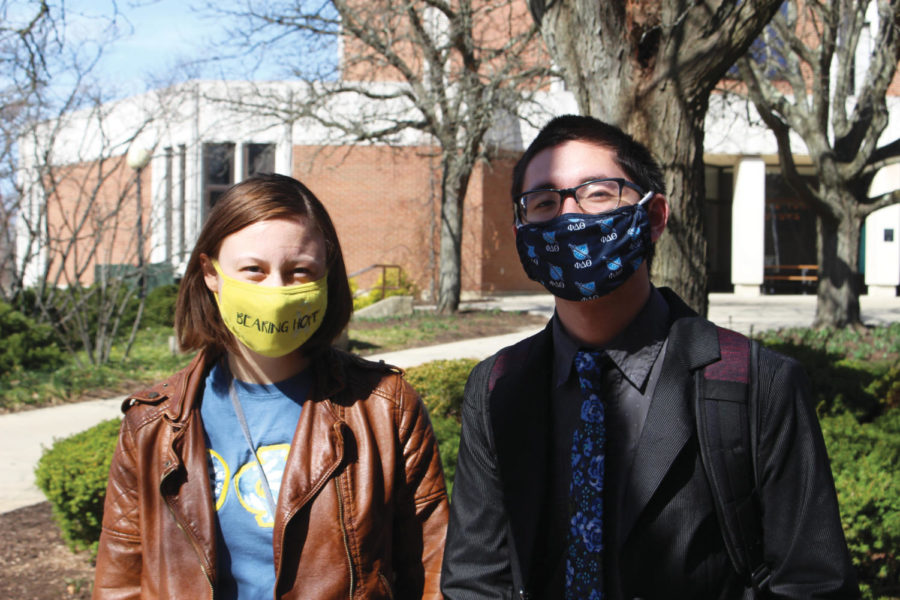One year later…
Evan Laux & Avaerie Fitzgerald
The Ashland Unviersity community begins to return to normalcy after over a year of being restricted by mask mandates, social distancing and online learning.
March 26, 2021
382 days have passed since Governor Mike DeWine declared Ohio in a state of emergency when three people in Cuyahoga County tested positive for the Coronavirus. Two days later, the fourth case sprang up.
380 days have gone by since the NCAA tournaments in Dayton were cancelled and the gathering of large groups became a large risk-factor. One day later, the fifth case appeared.
379 days sped by since schools were ordered to be closed for three weeks to prevent children and teachers from contracting the virus. One day later, the number of positive cases rose to 13.
376 days have gone by since the count affected 26 lives. 375 days when only 37 people had developed the symptoms of COVID-19.
374 days and 50 people knew what COVID-19 felt like, 14 were hospitalized.
These numbers symbolize the growth of a pandemic, which is one of the deadliest forms of natural disasters. Pandemics, as shown through history, only take a few days to change the life and routine of a body of people.

As the United States now grows closer to eradicating the virus once and for all with vaccines, there are still several factors to consider in the meantime.
Businesses have suffered losses after the lockdown, when essential and nonessential businesses both fought to stay open through it all. Individuals had to learn to cope with mask-wearing, social distancing, and the loss of major events and milestones.
President of Ashland University Dr. Carlos Campo can attest to seeing these changes as he led an institution of students and faculty through several hard times. The school had to navigate through deaths of colleagues who did not get to receive a memorial or funeral service, and also the upset of students who were not able to attend a graduation many dreamed of since they embarked on their journey to higher education.
“I do believe that the sense of community is even stronger at AU,” Campo said. “I heard from a lot of people that it was a really difficult time for them, and some had family members that were lost during this time. I feel like we’re an even stronger community and I do think the simple things that we took for granted in the past, we don’t take for granted anymore.”
Going into quarantine blindsided many to the toll that isolation can have on one’s attitude and outlook. Taking Ashland as an example, many saw the needs that residents had and provided for them in more ways than one.
Whether it was picking up lunches from the Ashland Middle School during the summer, getting groceries from the Kroc Center, or attending drive-in churches and picking up pre-made breakfasts from the parking lots, there were community-building actions that helped several people.

Ashland Mayor Matt Miller was not surprised by the actions of the community. He explained that Ashland has a long history of taking care of its own.
“The pandemic has shown us that once again, that the people of Ashland City and Ashland County are resilient. These are salt of the earth people who will adapt and can be trusted to do the right thing,” Miller said. “During these past 12 months our family, our students, our community leaders all stepped up to the plate to do whatever we had to do to keep moving and to keep our community safe.”
When the DeWine shut down several sectors of Ohio, all of the major employers in Ashland County remained open and continued to operate—few endured temporary furloughs. These factors, Miller said, kept the people working and ensured that the economy would remain intact.
“We did not go through the terrible situation of having so many people lose massive amounts of personal income during this past year. For our local economy, things went far better than expected,” Miller said.
The mayor looks at three different sources of revenue to determine whether the economy is doing well: city income tax collections, sales tax, real estate tax collections.
All three show whether local employees are making money, able to purchase things in the community and whether people are buying, selling and building homes. Sales tax collections were at an all-time high despite the pandemic, and real estate tax collections increased by $8-million, according to Miller.

Through the positives and negatives of this pandemic, both Miller and Campo agreed that community was what kept everything together. Whether it was by means of the economy, social events or mutual concerns, there was a general consensus that campus and community came together to help and educate each other.
“I learned how quickly things can change,” Campo said. “Our faculty moved things online, our students stuck with it and the drop-out rate was low. It wasn’t easy for anyone, so there is this idea that change can happen overnight and it has to be prepared for but [I have] respect for faculty, staff and students on this campus for how well they adapted to a really tough situation.”



